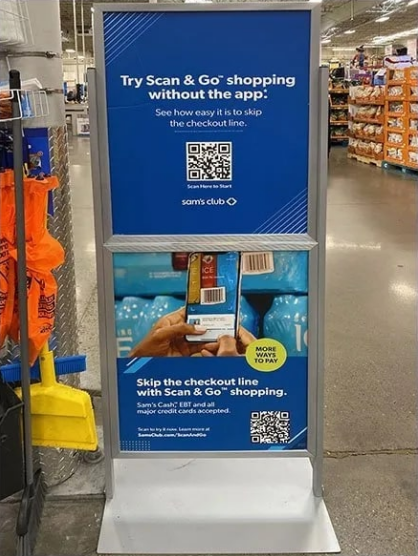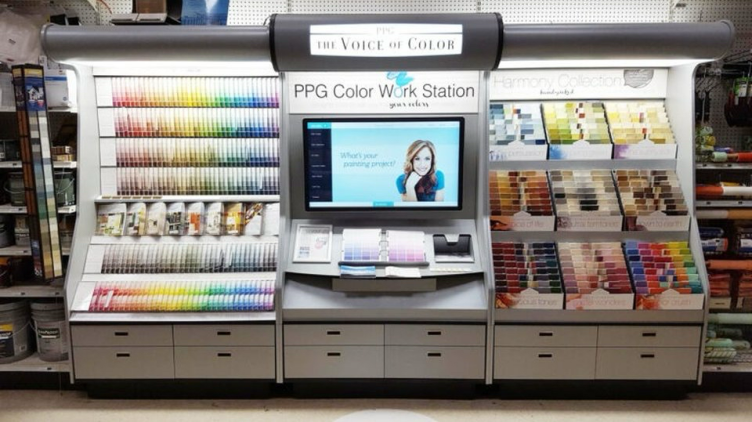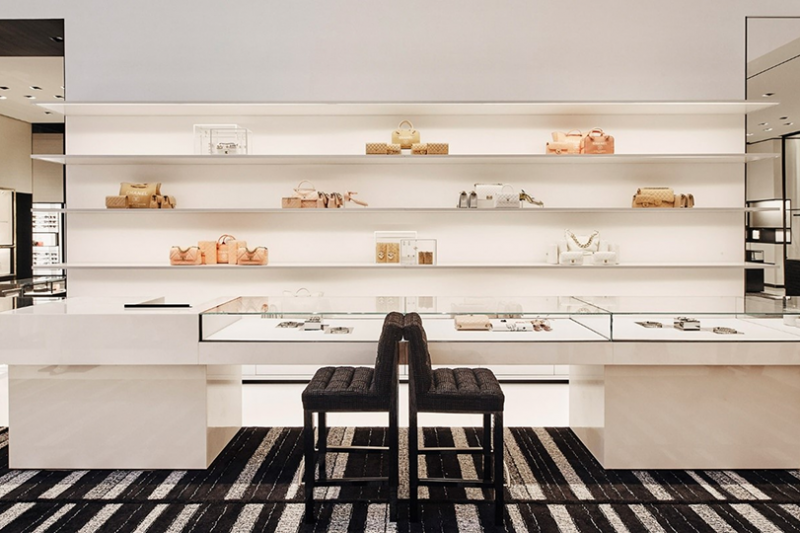In a perfect world, every shopper would be greeted by a well-trained promoter ready to demo your product. In the real world, especially in supermarkets, pharmacies, and convenience stores, it’s your POSM that has to do the talking.
Unmanned POSM must do three jobs at once:
- Grab attention
- Explain value
- Nudge conversion
Here’s how brands are winning shelf space and shopper decisions, without a single sales staff in sight.
1. Visual Hierarchy that Works in 3 Seconds
Shoppers don’t pause for long. At best, you have 3 seconds to earn attention in an aisle filled with noise.
This is where visual hierarchy becomes your best weapon.
- Hero visualsshould be bold, benefit-led, and emotionally resonant (not just logos).
- Font scaling Feature your price point, key claim, or product benefit in larger, high-contrast typography.
- Use of whitespacecan improve legibility from a distance. Don’t overcrowd your POSM even if the shelf is tight.

Check out this simple yet effective price-drop shelf talker spotted in a cereal aisle. The “NEW” callout instantly grabs attention, while the bright yellow price tag anchors the message. The QR code adds utility, directing shoppers to find more online, making the POSM both persuasive and functional. Clean whitespace, concise copy, and sharp contrast combine for a 3-second win in an unmanned, high-traffic environment.
2. Demo Displays Without the Demo Staff
Some products need a bit of education, especially new-to-category formats like dissolvable vitamin strips, enzyme drinks, or tech-enabled skincare.
Instead of relying on staff who may or may not be present:
- Install looping video screensshowing usage and benefits.
- Include tactile sample packsor testers (with hygiene covers).
- Integrate pull tabs or flip cardsfor shoppers to explore layers of info on their own.

The setup above blends a looping demo screen with fully accessible tools and attachments. Shoppers can watch real styling techniques on the screen while touching the devices and comparing attachments on their own. No promoter required.
3. Shoppable QR Codes that Lead to Purchase (Not Just Info)
A growing number of Malaysian shoppers are used to scanning QR codes, but most brands waste the opportunity by linking to product websites or videos.
Instead, consider using QR codes that:
- Lead directly to e-commerce purchase pages(Shopee, Lazada).
- Unlock vouchers or trial-sized redemption.
- Open up chat-to-orderor WhatsApp consultation with a beauty advisor.

Don’t settle for QR codes that just educate. Use them to activate: unlock discounts, trigger direct e-commerce journeys, or connect customers instantly to WhatsApp consultations. Make every scan shoppable.
4. POSM That Speaks Emotion When No One Else Can
In a low-attention setting, people don’t want to be “sold to.” They want to feel understood.
Emotion-led copy such as:
- “Sleepless again? Try this natural fix.”
- “Say no to sugar crashes.”
- “Because tired eyes need real help.”
…can create a moment of resonance, especially in self-browse environments like Watsons, 7-Eleven, or Jaya Grocer.
Use lifestyle imagery, not just packshots. Speak the shopper’s language, not just the brand voice.
5. Don’t Forget Lighting and Motion Triggers
In low-staff zones, the right light play or sensor can stop a shopper in their tracks.
Try:
- Backlit headersfor premium glow
- Motion sensorsthat trigger sound or visual
- Slow-moving light animationsfor attention without disruption

The above illustrates how backlit colour blocks and a central screen interface can invite self-exploration, even in the absence of a promoter. Such setups are highly effective in high-traffic, low-attention retail areas, where the interplay of light, colour, and interactivity guides shoppers to engage and explore on their own terms.
In a market like Malaysia where hybrid retail (offline trial, online buy) is the norm, unmanned POSM is no longer a fallback. It’s a frontline strategy.




